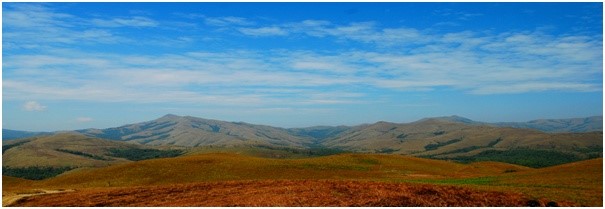Published on: August 1, 2023

Threats to western Ghats
Threats to western Ghats

According to new study, Habitats of endemic and threatened animals are adversely impacted by disruptive land-use patterns on the plateaus of a Western Ghats
Highlights:
- The study examined the animals’ response to the habitat changes caused by land conversion to create orchards and for paddy cultivation
Significance of western Ghats
- The western Ghats act as a key barrier, intercepting the rain-laden monsoon winds that sweep in from the south-west during late summer.
- A significant characteristic of the Western Ghats is the exceptionally high level of biological diversity and endemism recognized as one of the world’s eight ‘hottest hotspots’ of biological diversity
- It feeds large number of perennial river ,dammed for hydroelectric and irrigation purposes with major reservoirs spread across the states.
- The reservoirs of Ghats are important for their commercial and sport fisheries of rainbow trout, mahseer and common carp
What are the threats?
- Livestock grazing : Livestock grazing within and bordering protected areas by high densities of livestock (cattle and goats) is a serious problem because it causes habitat degradation.
- Illegal Hunting : It is driven by tradition or demand for wild meat is pervasive across the Western Ghats.
- Human Animal conflict: Very high human population densities in several parts of the hotspot further exacerbate the intensity of conflict. For example, villagers living close to Bhadra Wildlife Sanctuary in the state of Karnataka, lose approximately 11 percent of their annual grain production to raiding elephants every year.
- Extraction of forest produce: Human communities living within and adjacent to protected areas in the Western Ghats hotspot are frequently dependent on the extraction of non-timber forest products (NTFP) to meet a diversity of subsistence and commercial needs.
- For example, in the state of Karnataka, out of the 310 NTFP species extracted for various purposes, 40 are collected for regional and global markets and 110 are collected for consumption. Sustainability of NTFP extraction in the wake of expanding human populations and changing consumption patterns are critical issues.
- Fuel wood and fodder extraction: Extraction of wood from both live and dead plants represents a serious threat negatively affecting canopy gaps, regeneration (lower fruit and seed production), stand density, basal area and population structure.
- Plantations: Agroforestry systems in the Western Ghats are dominated by tea, coffee, rubber and monocultures of various species, including the recently introduced oil palm. Large-scale planting of coffee in the Western Ghats began in Kodagu.
- Population Growth: Expanding populations place a high demand on cultivated land and push the agricultural frontier to remote forested lands. Famine-driven Grow More Food campaign led to state supported clearing of forests for agriculture
- Forest fires: They take place annually during the dry summer season, especially in the Nagarhole-Bandipur-Wayanad-Mudumalai-Satyamangalam-BRT block which has the most bio diverse locations in the Western Ghats with the largest populations of tigers and elephants residing there.
Measures undertaken to conserve the western Ghats
- Wildlife (Protection) Act (WPA), 1972 : National parks are by law more strictly protected, allowing virtually no human activity except that which is in the interest of wildlife conservation. Grazing, private tenurial rights are disallowed in park
- Indian Forest Act, 1927: The main objective of the Indian Forest Act (1927) was to secure exclusive state control over forests to secure the demand for timber and regulate the ownership of tribal community land
- The Forest (Conservation) Act, 1980 :The Act made the prior approval of the federal government necessary for de-reservation of reserved forests, logging and for use of forestland for non-forest purposes.
- The Biological Diversity Act, 2002: It provides for conservation of biological diversity, sustainable use of its components and fair and equitable sharing of the benefits arising out of the use of biological resources
- Madhav Gadgil committee had recommended to declare 75% in the Western Ghats as an environmentally sensitive area for effective conservation
- Community reserves and conservation reserves provide a greater role for local communities, stakeholders and civil society as well as the opportunity to protect many areas of conservation value
Way forward
- Greater awareness of conservation issues with communities in human-modified landscapes of the Western Ghats must be financially more secure and sustainable.
- Large number of local civil society groups working for conservation of biodiversity and natural resources are the need of an hour.
- Innovative conservation models that combine regulated use with community reserves, conservation reserves become important to pursue these goals.

